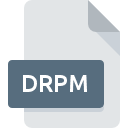.DRPM File Extension

Delta RPM File
| Developer | The Fedora Project |
| Popularity | |
| Category | System Files |
| Format | .DRPM |
| Cross Platform | Update Soon |
What is an DRPM file?
The .DRPM file extension stands for Delta RPM (DRPM) file. Delta RPMs are a specialized type of RPM (Red Hat Package Manager) file, which is used primarily in Linux environments.
Unlike regular RPM files, which contain the complete set of files needed for installation or updates, Delta RPMs are designed to facilitate incremental updates.
They essentially contain only the differences between two versions of a software package, making them much smaller and more efficient for updates.
More Information.
The concept of Delta RPMs emerged in the early 2000s as a response to the growing need for efficient update mechanisms.
Traditional RPM files, while effective for software installation, could be quite large, especially for minor updates or patches. Distributing full RPM files for each update could consume significant bandwidth and storage.
Delta RPMs were developed to address this issue by allowing users to download only the differences (or “delta”) between the currently installed version and the new version of a package.
This was particularly beneficial in environments where frequent updates were required, but full package updates would be too costly in terms of bandwidth and time.
Initially, DeltaRPM was used within Red Hat-based distributions, such as Red Hat Enterprise Linux (RHEL) and Fedora, and its use has since expanded to other RPM-based systems.
The DeltaRPM project aimed to reduce the size of updates and make the process of updating software more efficient and manageable.
Origin Of This File.
The .DRPM file format was introduced as part of the DeltaRPM project, which aimed to improve the efficiency of software updates in RPM-based distributions.
RPM itself, created by Red Hat, has been a widely used package management system for various Linux distributions.
DeltaRPM was conceived to address the challenge of distributing software updates over networks where bandwidth and storage constraints are prevalent.
File Structure Technical Specification.
.DRPM file is a compressed archive that contains the differences between two versions of an RPM package. It utilizes a specialized format that records the changes required to update from the old version to the new one. Here’s a breakdown of its structure:
- Header: This section contains metadata about the Delta RPM file, including information about the base RPM file and the version of the Delta RPM format used.
- Delta Data: The core of the .DRPM file, this section contains the binary differences between the old and new versions of the package. It includes instructions on how to apply these changes to the base RPM to produce the updated package.
- Compression: Delta RPM files are typically compressed using standard compression algorithms like bzip2 or xz, which helps reduce their size further.
The Delta RPM format relies on a few key technical concepts:
- Delta Encoding: This technique records only the changes between two versions rather than the complete files. Delta encoding can significantly reduce the amount of data that needs to be transferred and stored.
- Patch Application: Delta RPMs include the instructions needed to apply the recorded changes to the base RPM. This ensures that when the Delta RPM is applied, the result is a fully updated RPM package.
How to Convert the File?
Converting a .DRPM file to a standard RPM file involves applying the delta to the base RPM. This process is typically handled by package management tools. Here’s a general approach:
- Ensure Base RPM is Available: Obtain the base RPM file that corresponds to the version being updated. This file must be present for the delta to be applied.
- Use RPM Tools: Utilize RPM tools such as
rpmordeltacommands to apply the Delta RPM. For example, thecreaterepoanddeltautilities can be used in Red Hat-based distributions to handle Delta RPM files. - Apply Delta: The tool will apply the changes contained in the .DRPM file to the base RPM, generating an updated RPM file.
Advantages And Disadvantages.
Advantages:
- Reduced Bandwidth Usage: By transmitting only the differences between package versions, Delta RPMs can significantly reduce the amount of data that needs to be downloaded. This is particularly useful for systems with limited bandwidth or when updating large software packages.
- Smaller Update Sizes: Delta RPMs are generally much smaller than full RPM files, which helps in saving storage space and speeds up the update process.
- Efficient Updates: For users who frequently update their systems, Delta RPMs can streamline the process by minimizing the amount of data that needs to be processed and transferred.
Disadvantages:
- Complexity: Handling Delta RPMs requires additional processing to apply the delta changes to the base RPM. This adds a layer of complexity compared to working with full RPM files.
- Dependency on Base RPM: To apply a Delta RPM, the base RPM file (the older version) must be present on the system. If the base RPM is not available, the Delta RPM cannot be applied, which can complicate updates in some scenarios.
- Potential for Corruption: If either the Delta RPM or the base RPM file is corrupted, the update process may fail, potentially leaving the system in an inconsistent state.
How to Open DRPM?
Open In Windows
- Delta RPMs are not natively supported on Windows. However, if you need to work with .DRPM files on Windows, you would typically require a Linux virtual machine or compatibility layer, such as Windows Subsystem for Linux (WSL), to handle these files.
Open In Linux
- Delta RPMs are primarily used in Linux environments. To handle .DRPM files, you can use package management tools such as
rpm,yum, ordnf. These tools are capable of applying Delta RPMs and updating software packages accordingly.
Open In MAC
- Similar to Windows, macOS does not natively support .DRPM files. Users would need to use a Linux environment or virtual machine to work with Delta RPMs.











